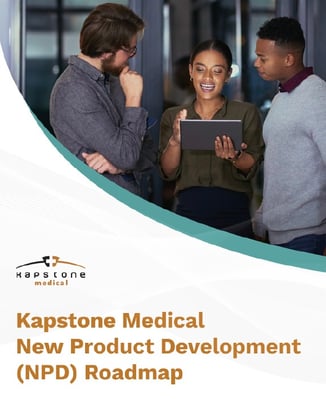An effective medical device commercialization strategy is imperative for successful product launch and scaling. But, like New Product Development, advancing a go-to-market plan can be tricky without the assistance of a trusted medical device consultant.
At first glance, collaborating with a consultant partner may seem like overkill. The four steps listed below in a typical medical device commercialization plan are straightforward. However, attending to the many nuances required for proper execution requires expertise that may fall outside the scope of a device manufacturer.
A closer look at the key focus areas reveals the complexities of each commercialization step and the value-add of a medical device consultant partnership:
- Identify the target market and analyze competitors
- Verify compliance with regulatory requirements
- Develop robust sales and marketing plans
- Manage quality assurance and post-market surveillance
1. Identify the target market and analyze competitors
Having a clear understanding of how and where a device will be used provides answers to key questions about appropriate markets. Identifying the setting — hospitals, clinics, Ambulatory Surgery Centers (ASCs), homes, etc. — reveals the audience needs, challenges the device addresses, potential billing and reimbursement methods, and ultimately the business growth potential within the market.
Focused discovery about target markets also is an opportunity to explore competing products, companies, and strategies. Awareness of current market offerings is beneficial on the whole, but it also opens the door to innovation. What gaps exist in the market that may be a fit for differentiation? Are new companies or products disrupting the market that point to the future?
Leveraging the intelligence gleaned from market and competitive analysis is insightful — and necessary foundational work for a strategic medical device commercialization plan.
2. Verify compliance with regulatory requirements
Patient safety and effectiveness drive in-depth regulations for medical devices. Regulatory bodies provide comprehensive frameworks around compliance at every product lifecycle stage. The due diligence necessary to meet these standards not only ensures compliance, it gives manufacturers comprehensive insights and action steps for managing quality and risk as an effective business.
A partnership with an experienced medical device consultant is valuable in helping manufacturers overcome challenges and launch compliant devices. With the help of a consultant partner, manufacturers are positioned to:
- Leverage specialized and practical knowledge, expertise, and relationships in order to gain efficiencies when bringing a device to market
- Optimize time and costs with the consultant’s input on development, testing, documentation, and regulatory submissions
- Achieve faster time to market and competitive advantage by avoiding unnecessary steps and inaccurate regulatory submissions
3. Develop robust sales and marketing plans
Sales (including distributors) and marketing work hand-in-hand to support medical device commercialization. Content and messaging that reflects a deep understanding of pain points key decision makers confront and, likewise, how to solve them invites further exploration of device solutions.
Likewise, having a solid post-launch commercialization plan in place provides the reach and resources sales and marketing teams need to remain responsive. Methods to track and document distribution, sales, feedback, market response, and reimbursement informs strategies and refinements for internal and regulatory purposes.
4. Manage quality assurance and post-market surveillance
Continuous improvement is the goal. Relying on a medical device consultant and the strength of the Quality Management System (QMS) in place for the now-launched device provides the guidance and data necessary to monitor quality and implement post-market surveillance.
It’s more than smart business. Post-market surveillance activities capture real-world data that informs risk-benefit evaluation of medical devices. When properly developed and implemented within a medical device commercial strategy, post-market surveillance provides actionable insights for the improvement of medical device safety, tolerability, and usability.
Collaborating with Kapstone Medical
Medical device commercialization is a lengthy, complex, and necessary process for manufacturers. Collaborating with a trusted medical device consultant such as Kapstone brings new perspectives on efficiencies, along with a depth of knowledge that only years of experience in the industry can cultivate.
As a single-source solution for taking medical devices from concept through commercialization, Kapstone is the go-to for comprehensive strategies and solutions. Learn more in the Kapstone Medical New Product Development (NPD) Roadmap. Click below to download your copy of this valuable resource.




